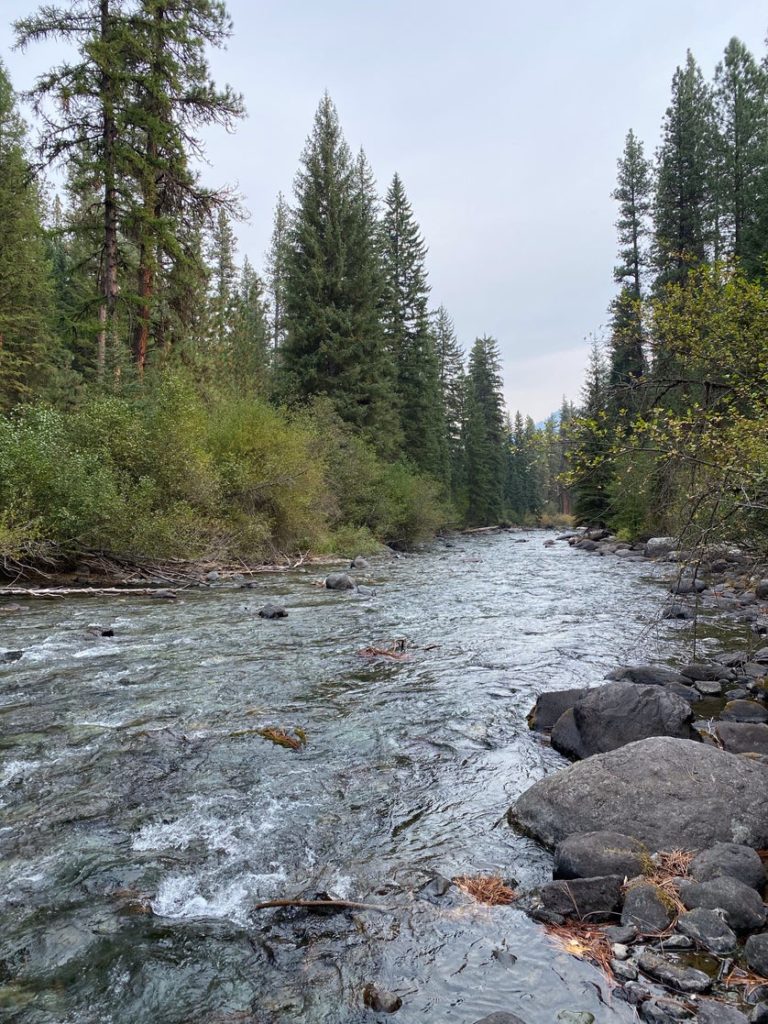
We camped last week on the Imnaha River in northeastern Oregon. It was beautiful and wonderful to be with my family. You should visit.
My great grandfather settled in the next valley, south of the Wallowa Range. The 1910 census says he entered the United States in 1877. I have no idea when he staked out his horse ranch in Pine Valley, but I do know that land, and the land I live on today in Moscow, Idaho was part of the 1855 treaty agreed on by the Nez Perce chiefs and the United States government. But things changed.
You should also know that the US government decided it had made a deal it didn’t want to keep and in 1863 tried to renegotiate that treaty with the Nez Perce chiefs. The offer was for a much-reduced area in central Idaho, what now comprises the Nez Perce Reservation. Joseph, whose father was buried near Wallowa Lake refused to sign, as did many other signatories who saw their land being taken. A Nez Perce chief who lived on the proposed reservation did sign the agreement. The US Army showed up to tell Joseph and his band to leave the Wallowa. “You say I have sold my land when a neighbor has signed the contract?” The rest is the bitter tale you must know. The battles, the deaths, the strategy and maneuvering that led to the surrender of the “nontreaty” Nez Perce 40 miles from the Canadian border, in the cold of winter. This story should be known by all.
Should our children know this story? Would teaching this story in Idaho classrooms be “compelling” them to believe one race is better than another? I don’t think so. I believe my great grandfather saw the grassy Pine Valley opportunity and took it. But if the 1855 treaty held, he could not have owned that land. Our government, and the US Army cleared the way for him.
But did the US government, and the hordes of immigrants looking for opportunity in the late 19th century in this great American west consider this an injustice? I doubt it. Free land, make of it what you can.
The Idaho legislatures half kneel to the right-wing conservative legislators who swung the “Critical Race Theory” effigy from their pike embarrasses me. Why can’t we stand up to bullies?
Maybe they learned from Joseph. He tried for years to discourage settlers into the Wallowa Valley, peacefully. He opposed talk of war. But when it became inevitable, he worked with his people. His younger brother, Ollokot, was killed. Many other chiefs and warriors and tribal members were killed as they ran for their lives to Canada.
Joseph tried to make the US Army, the US government, the bullies see the injustice. They could not. He and his followers paid.
This is a story that needs to be told. And I feel the shame. I don’t know if you will, and I cannot compel you to. But the story must be told.
Stories like this make one consider the balance of justice, and the world we strive to build.
We took a hike up from a trailhead in the hot sun and shaded timber to the Blue Hole of the Imnaha. The clear late June runoff ran between basalt out-croppings and you can stand above and look through the clear water. When we did this a couple years ago in the fall, the steelhead could be seen, heading up to their spawning grounds. It should be the season for Chinook salmon to spawn. I stood for a long while. But I gave up.
It is hard to know how to stand up to the bullies and opportunists around us. Knowing justice is just the beginning of the fight. Stories teach us. We should tell them.
